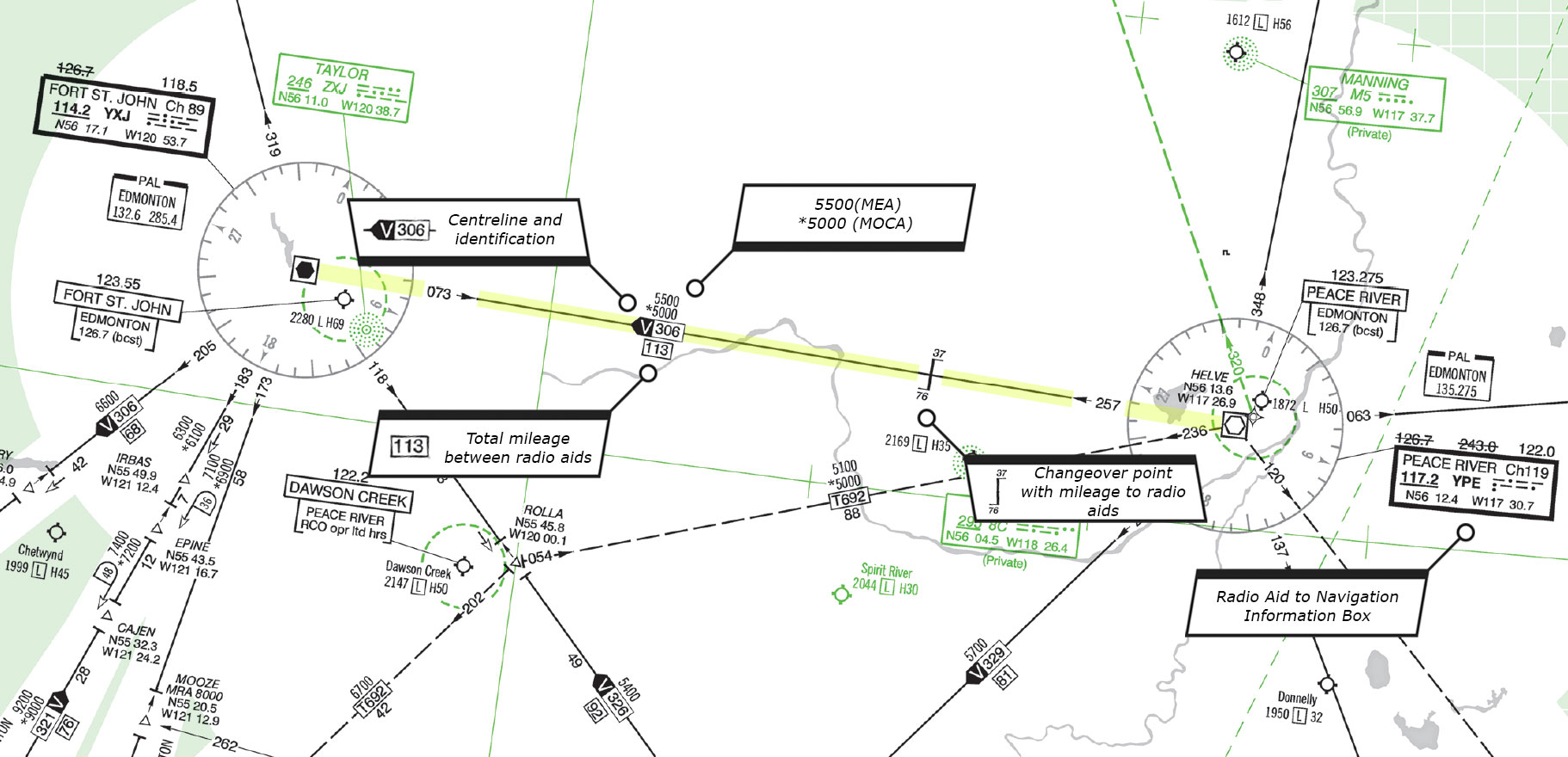✈️VHF/UHF Airways
VHF/UHF airways are controlled low-level airways that extend upwards from 2,200 feet up to, but not including, 18,000 feet ASL and are more commonly known as Victor airways. They are defined using VHF and UHF ground-based navigation aids which form a network of radio systems installed on the ground that helps a pilot determine their aircraft’s position in the air relative to a particular ground station. The most relevant ground-based navigation aids to civilian pilots are the VOR, VOR/DME and VORTAC.

✈️Dimensions
The basic width of a Victor airway is 4 NM on each side of the centreline, meaning that any aircraft operating at an altitude between 2,200 feet up to but not including 18,000 feet within 4 NM of either side of the airway’s centreline will be operating within Class E controlled airspace. If however, an airway is sufficiently long, the basic width is widened between the points where lines, diverging 4.5° on each side of the centreline from the designated facility, intersect the basic width boundary and where they meet, similar lines projected from the adjacent facility.

